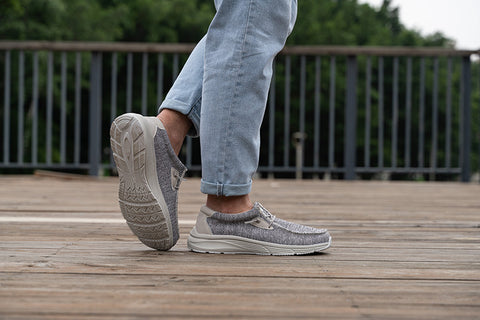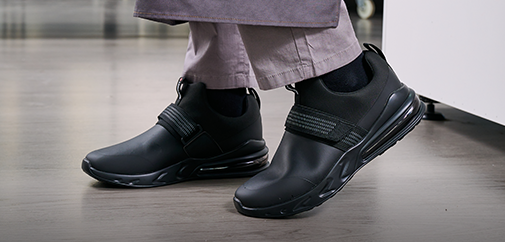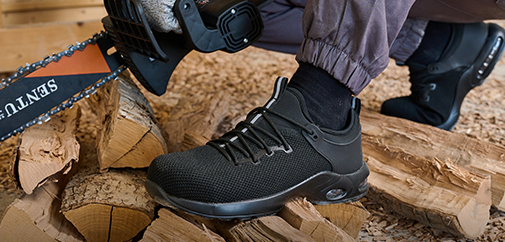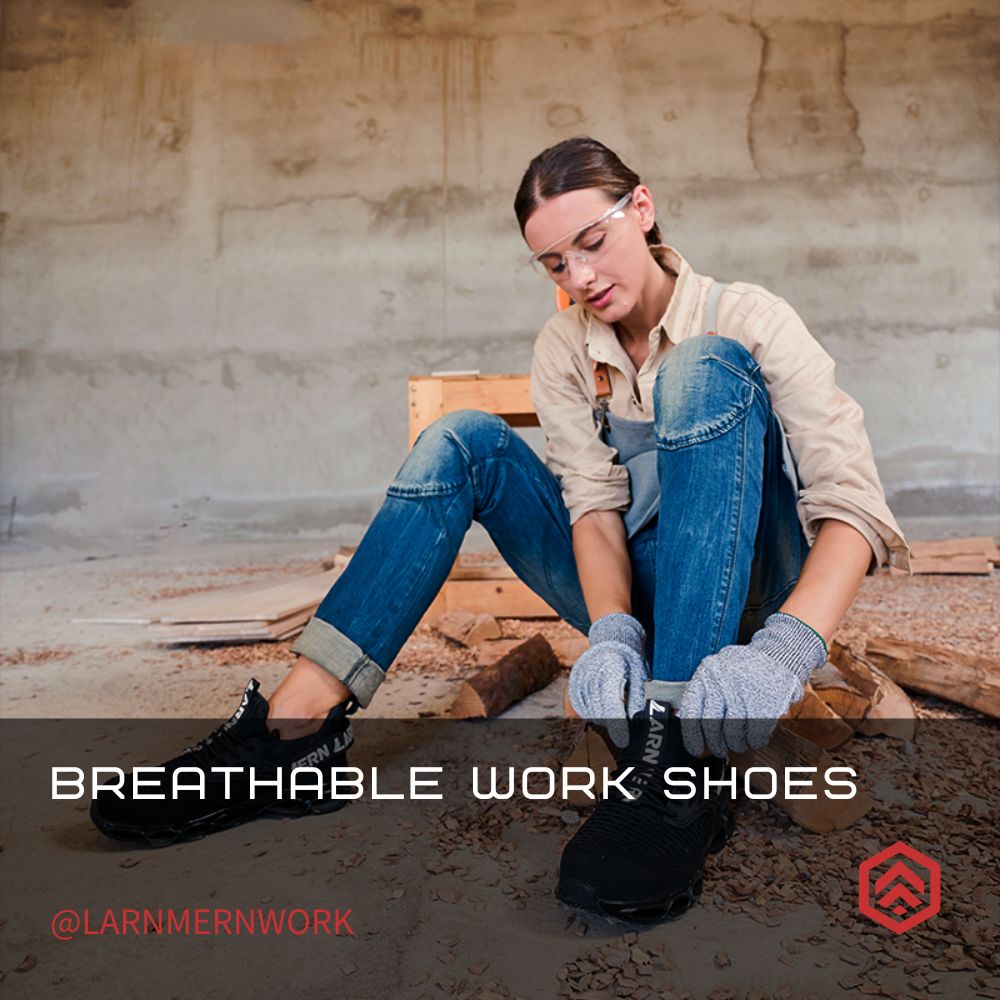The world of culinary arts is a fast-paced, high-pressure environment where chefs are constantly on their feet, working tirelessly to create gastronomic delights.
In such an intense setting, every piece of clothing and equipment is carefully chosen to enhance performance and comfort. One often-overlooked but crucial element of a chef's attire is their footwear. Among the various options available, slip-on chef shoes have gained popularity among culinary professionals.
In this article, we will explore the reasons behind chefs' preference for slip-on chef shoes, delving into what these shoes are, their unique features, and who benefits from them.
What Are Slip-On Shoes?

Slip-on shoes, as the name suggests, are a type of footwear designed without laces, buckles, or any complex fastening mechanisms. Instead, they are designed to be easily slipped on and off the feet.
These shoes typically have an elasticized opening or a stretchy panel on one or both sides, allowing the wearer to slide their feet into the shoes effortlessly. Slip-on shoes come in various styles, from casual to formal, making them versatile options for a wide range of professions and activities.
What Are Chef Shoes?

Chef shoes, also known as kitchen shoes or culinary footwear, are a specialized category of footwear designed specifically for chefs and kitchen staff. These shoes are carefully crafted to meet the unique demands of working in a kitchen environment.
Chefs spend long hours on their feet, often in high-temperature environments, and are frequently exposed to slippery floors, hot liquids, and heavy objects. Therefore, chef shoes are tailored to address these challenges effectively.
The Features of Chef Shoes

1. Slip Resistance
One of the most crucial features of chef shoes is slip resistance. Kitchens are prone to spills, whether it's water, oil, or food particles. Slip-resistant soles, often made of rubber or a slip-resistant compound, provide chefs with the necessary traction to prevent accidents and injuries. Slip-on chef shoes typically have this feature, ensuring that chefs stay firmly grounded even in the most hectic kitchen situations
2. Durability
Chef shoes are designed to withstand the rigors of a kitchen environment. The durable construction and materials used in these shoes help them withstand frequent exposure to water, heat, and harsh cleaning chemicals. Slip-on chef shoes are no exception, offering chefs long-lasting comfort and protection throughout their demanding shifts.
3. Comfort and Support
Comfort is paramount for chefs who spend extended hours on their feet. Chef shoes are equipped with features that prioritize comfort, such as cushioned insoles, arch support, and padded collars. Slip-on chef shoes are no different, providing chefs with the necessary comfort and support to reduce fatigue and foot pain.
4. Easy to Clean
Kitchens can get messy, and chef shoes need to be easy to clean to maintain hygiene standards. Slip-on chef shoes often have smooth, non-porous uppers that are simple to wipe clean, ensuring that any spills or splatters can be easily removed.
5. Ventilation
Working in a hot kitchen can lead to sweaty feet, which can be uncomfortable and contribute to odor. Many chef shoes, including slip-on styles, feature ventilation ports or mesh panels to promote airflow and keep the feet cool and dry.
6. Lightweight
Chef shoes are typically designed to be lightweight, as heavy footwear can contribute to fatigue during long shifts. Slip-on chef shoes are no exception, offering chefs a lightweight option that reduces the strain on their legs and feet.
Who Needs Chef Shoes?

1. Chefs and Cooks
The primary audience for chef shoes is, of course, chefs and cooks. These professionals spend the majority of their working hours in a kitchen, and the unique features of chef shoes, including slip-on styles, are tailored to their specific needs. Slip-on chef shoes allow for quick changes and provide the necessary comfort, support, and safety required in the kitchen.
2. Kitchen Staff
Beyond chefs, various kitchen staff members benefit from wearing chef shoes. This includes sous chefs, line cooks, pastry chefs, and dishwashers. Anyone working in a kitchen environment, where slip-resistant, durable, and comfortable footwear is essential, can benefit from wearing chef shoes.
3. Culinary Students
Aspiring chefs and culinary students can also benefit from chef shoes, especially when they are training in culinary programs or working in professional kitchens as part of their education. Slip-on chef shoes offer a practical and functional choice for those honing their culinary skills.
4. Food Service Workers
In addition to chefs and kitchen staff, employees in the food service industry, such as waitstaff and bartenders, may also find slip-on chef shoes useful. These workers often move between the kitchen and dining areas and may encounter spills or slippery surfaces. Slip-on chef shoes can provide added safety and convenience.
5. Home Cooks
While chef shoes are primarily associated with professional chefs, home cooks who are passionate about cooking and spend significant time in the kitchen can also benefit from slip-on chef shoes. These shoes can provide the same comfort, support, and safety features to home chefs, enhancing their cooking experience.
The Importance of Footwear in the Culinary World

To truly understand the significance of slip-on chef shoes, it's essential to recognize the importance of footwear in the culinary world. Chefs and kitchen staff face a unique set of challenges and demands that require specialized footwear solutions. Let's delve deeper into why the right shoes are crucial in this context.
1. Long Hours on Their Feet

One of the defining aspects of working in a kitchen is the extended hours spent on one's feet. Chefs and kitchen staff are constantly moving, chopping, sautéing, and plating dishes. This continuous activity can take a toll on the feet and lower limbs. Slip-on chef shoes with proper cushioning and support can significantly reduce the risk of fatigue and discomfort associated with prolonged standing.
2. Safety Hazards
Kitchens are filled with potential safety hazards. The risk of slipping and falling is ever-present due to spills, wet floors, and greasy surfaces. Chef shoes with slip-resistant soles are designed to mitigate this risk, providing chefs with the stability and grip they need to navigate the kitchen safely. Slip-on styles ensure that there are no loose laces to trip over or become entangled.
3. Heat and Spills
The kitchen environment can be hot and chaotic, with hot liquids, sizzling pans, and boiling pots adding to the challenges. Chef shoes are often heat-resistant and designed to withstand exposure to high temperatures. Additionally, the easy-to-clean nature of slip-on chef shoes is a significant advantage when it comes to dealing with spills and splatters.
4. Hygiene
Maintaining a high level of hygiene is paramount in professional kitchens. Slip-on chef shoes with non-porous uppers are easy to clean and disinfect, helping chefs adhere to strict hygiene standards. This feature is especially important given the potential for food contamination and the need for a clean working environment.
The Evolution of Chef Footwear

The concept of chef shoes has evolved over time to meet the changing needs of the culinary industry. Traditional chef shoes were often clogs or slip-resistant leather shoes with laces. However, the introduction of slip-on chef shoes marked a significant shift in culinary footwear. This evolution can be attributed to several factors.
1. Convenience
Slip-on chef shoes offer unmatched convenience. Chefs can quickly slip them on and off, saving precious seconds during the hectic pace of a busy kitchen. This ease of use allows chefs to respond rapidly to changing kitchen conditions and demands.
2. Modern Materials
Advancements in materials technology have played a crucial role in the development of slip-on chef shoes. Lightweight and durable materials, such as EVA foam and synthetic uppers, have become popular choices. These materials not only make the shoes comfortable but also ensure they can withstand the demands of a commercial kitchen.
3. Style and Versatility
Traditional chef shoes were often utilitarian in design, focusing primarily on functionality. However, slip-on chef shoes have bridged the gap between functionality and style. They come in a variety of designs, colors, and patterns, allowing chefs to express their personal style while maintaining a professional appearance. This versatility makes slip-on chef shoes suitable for both the kitchen and front-of-house roles.
The Role of Footwear in Kitchen Culture

The choice of footwear in the culinary world is not merely a matter of practicality; it also reflects the culture and identity of the kitchen. In many ways, chef shoes have become a symbol of a chef's commitment to their craft and their dedication to their team. Let's explore the role of footwear in kitchen culture.
1. Team Unity
In a professional kitchen, chefs and kitchen staff often wear similar or identical footwear as part of their uniform. This uniformity fosters a sense of unity and belonging within the team. It reinforces the idea that every member of the kitchen, from the executive chef to the dishwasher, plays a vital role in creating a successful dining experience.
2. Pride in the Profession
Wearing specialized chef shoes is a source of pride for many culinary professionals. It signifies their commitment to their craft and their willingness to invest in the tools of their trade. Slip-on chef shoes, with their comfort and functionality, allow chefs to focus on their work without distractions.
3. Expression of Individuality
While uniformity is important in a kitchen, slip-on chef shoes also provide an opportunity for chefs to express their individuality. Chefs can choose shoes that align with their personal style, whether it's a bold color, a unique pattern, or a specific brand that resonates with them. This expression of individuality can boost morale and create a positive work environment.
The Psychological Impact of Comfortable Footwear
Comfortable footwear can have a significant psychological impact on chefs and kitchen staff. When chefs are free from the distraction of uncomfortable shoes, they can focus more fully on their culinary tasks. Let's delve into the ways in which comfortable footwear positively influences the mindset of chefs.
1. Confidence Boost
Knowing that their feet are well-supported and comfortable, chefs can approach their work with confidence. They are less likely to be preoccupied with foot discomfort or pain, allowing them to concentrate on their culinary creations and the smooth operation of the kitchen.
2. Enhanced Productivity
Comfortable chef shoes can contribute to enhanced productivity. Chefs who are not constantly shifting their weight or taking breaks to alleviate foot discomfort can work more efficiently and complete their tasks in a timely manner.
3. Reduced Stress
The high-pressure environment of a professional kitchen can be stressful. Comfortable footwear helps reduce physical stress on the body, which, in turn, can alleviate mental stress. Chefs who are physically comfortable are better equipped to handle the demands and challenges of the kitchen without feeling overwhelmed.
4. Focus on Creativity
In a creative profession like cooking, mental clarity and focus are essential. Comfortable chef shoes ensure that chefs can immerse themselves in their creative process without distractions. This allows them to experiment with flavors, presentation, and techniques, ultimately leading to more innovative and delightful dishes.
The Future of Slip-On Chef Shoes

As the culinary industry continues to evolve, so too will the technology and design of chef footwear. The future of slip-on chef shoes holds exciting possibilities, as manufacturers and chefs alike seek to further enhance functionality, comfort, and style.
Let's take a closer look at the global leader in comfortable work shoes, LARNMERN. Explore what makes their AirWalk Mercury, offering ultimate slip resistance, durable support, and all-day comfort with shock absorption, the top-selling choice on online platforms for the past 8 months.
1. Sustainable Materials
With sustainability becoming a growing concern in all industries, including culinary arts, we can expect to see an increase in slip-on chef shoes made from eco-friendly and sustainable materials. Manufacturers will likely prioritize materials that are not only durable and comfortable but also environmentally responsible.
2 Smart Footwear
The integration of smart technology into footwear is a trend that has gained traction in recent years. In the future, we may see slip-on chef shoes equipped with features like built-in temperature sensors to warn chefs of hot surfaces, or pressure sensors to analyze foot movement and posture, helping to prevent injuries and reduce fatigue.
3. Customization
Personalization and customization are increasingly important in consumer products. Chefs may have the option to customize their slip-on chef shoes, choosing the level of arch support, cushioning, and other features to suit their specific needs. This level of customization can further enhance comfort and performance.
Conclusion
Slip-on chef shoes have become a preferred choice for culinary professionals, thanks to their slip-resistant design, durability, comfort, and other specialized features that cater to the unique demands of the kitchen environment.
Whether you are a professional chef, a culinary student, or a passionate home cook, investing in slip-on chef shoes can improve your overall cooking experience by ensuring your feet remain comfortable, supported, and safe throughout your culinary endeavors.
In the fast-paced world of the culinary arts, slip-on chef shoes are indeed a step in the right direction, and as technology and design continue to advance, the future of chef footwear holds exciting possibilities that will further elevate the culinary experience.
If you're also interested, head over to the website of the global next-generation comfortable work shoe brand, LARNMERN, to make your selection.












